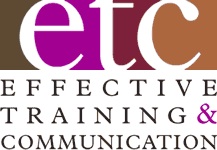Remember when a parent or your piano teacher told you that ‘Practice makes Perfect’? They didn’t know it at the time, but they were wrong. Practice does NOT make perfect. Practice only makes Permanent! Only Perfect Practice makes Perfect.
So what does this bit of philosophy have to do with workplace presentations or sales pitches? Well … everything. That’s how you get into the Presenters Hall of Fame.
Let’s assume you’ve planned and organized a world-class audience-centric presentation, created effective speaker support slides and a useful handout. And you’re even ahead of the time line, since the presentation to senior management isn’t for three days.
Well, all that preparation will be for naught unless you deliver the presentation with credibility, competence and confidence. So, the more and better you practice it, the better your results will be. Make sense?
What follows are some Best Practices regarding practice from Best-In-Class workplace presenters I’ve had the pleasure of coaching over the years.
1. Don’t try to memorize
Unless you’re a gifted actor, memorizing your presentation will take way too long and cause you some problems. And, if you forget even one word, you can choke and loose credibility and confidence. Workplace presenters don’t memorize it, they learn it. There’s a big difference.
If your content must be delivered word for word for legal or procedural reasons, you’re better off reading the text anyway, but still reading it with vocal energy and audience engaging eye control.
2. Start with your detailed outline
You created one during your planning phase … or should have. Go over it several times to make sure you know the content flow, facts, stats, quotes, etc. cold. Verbalize the transition statements that get you from point to point to make it easier to follow. Actors would call this process a table reading – getting familiar with the dialogue.
3. Create Speaker Notes
Once you’re comfortable with delivering the content, create a minimal amount of Speaker Notes to help keep you on track and remember what comes next. Use a large enough font size so you can easily see the notes from the table, podium or held in your non-gesturing hand. Bigger is better, so the fewer the words the better. And remember to avoid using 3 x 5 note cards – way too small to be practical. And when presenters wind up holding them with two hands a lot to avoid dropping them, they restrict their effective gestures
Because your Speaker Notes are simple words or phrases, there’s little temptation to read them to your audience. Just glance at them in silence and continue delivering your presentation to your audience’s faces.
If your presentation is heavily supported with slides, you can use the PowerPoint screen print with notes function.
4. Practice like you’ll deliver it
Practice several times only from the Speaker Notes just like you’ll actually deliver it – out loud, standing up, changing the slides, etc. Best Case Scenario – practice in the actual room you’ll be delivering it in. This will help you ‘get into character on stage’. Actors would call this a dress rehearsal. You can pretend people are seated so you can practice your eye contact as well. When that isn’t possible, find some space that comes close, like a meeting or training room … or your dining room.
And make sure you practice for time. While you can’t control when you start, you can control when you stop. Allow enough time for the anticipated questions as well. You can even practice the answers, so you’ll be smooth and concise. If you have 30 minutes on the agenda, aim for 25 in your practicing to allow for the unexpected. No one will mind if you end five minutes early. Everyone will mind if you end five minutes late.
5. Get feedback
While time-consuming, it can be very helpful to practice in front of people who can relate to the content from the audience’s perspective. Position them about the actual circumstances and the kind of feedback you’re looking for – specific, detailed, observable and constructive. This is especially useful if you’re part of a team delivering a presentation. You can coach each other.
6. Critique yourself
You can also audio or videotape your practice for self-critique. When you listen and watch, do so from the audience’s perspective, not yours as presenter. This will help you hear what they hear and see what they see.
7. Invest the time
If you practice your typical 30-minute workplace presentation thoroughly, this process can add several hours to your already busy schedule. How do you find the time? You make the time.
Obviously, the more important the presentation is to your employer and your professional objectives, the more time you should be willing to commit to creating – and practicing – an excellent message. Spend small amounts of time practicing over the week before ‘show time’, rather than trying to do it all the night before. That kind of last minute cramming might have worked for your college tests, but it doesn’t work well for presentations.
8. Debrief results.
When you’re finished, ask yourself what worked and what you would do differently the next time to make it even better. Feedback from observers can also help you focus on constant improvements. If you can audio or video tape your actual presentation with that being obtrusive, even better. Remember, the audience only knows what they heard and saw, not what you wanted to say
By now, it’s clear that practicing your presentation involves a lot more time and effort than merely looking at your outline or slides a few times before you take the platform. Apply these Best Practices so you can have perfect practice to achieve perfect – and permanent – results.

